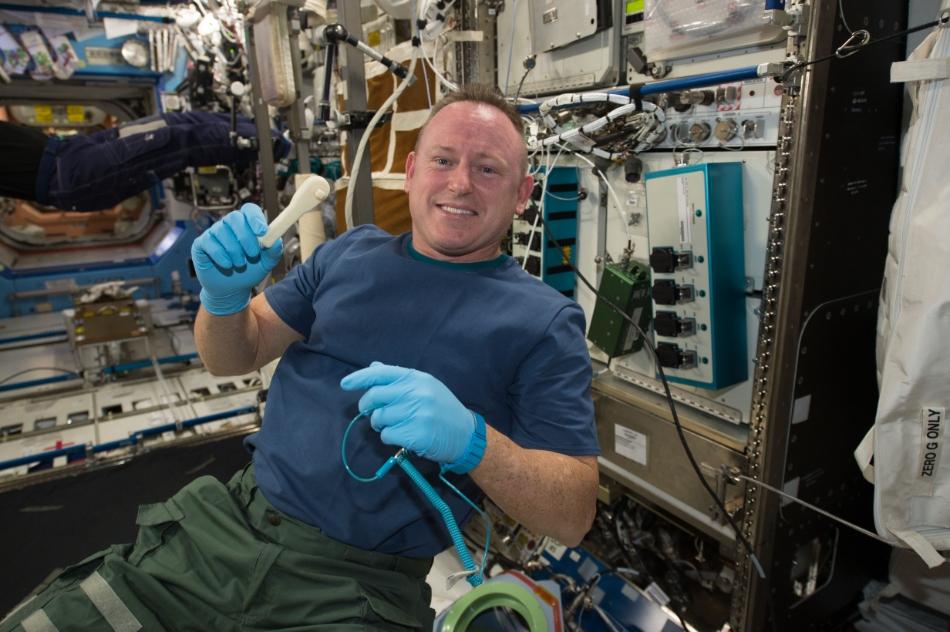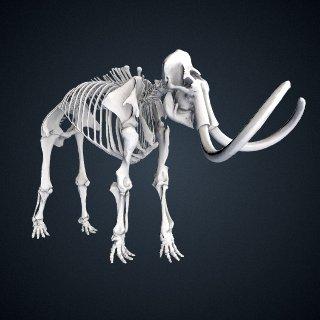Editor-in-Chief
- FMA
- The Fabricator
- FABTECH
- Canadian Metalworking
Our Publications
Categories
- Additive Manufacturing
- Aluminum Welding
- Arc Welding
- Assembly and Joining
- Automation and Robotics
- Bending and Forming
- Consumables
- Cutting and Weld Prep
- Electric Vehicles
- En Español
- Finishing
- Hydroforming
- Laser Cutting
- Laser Welding
- Machining
- Manufacturing Software
- Materials Handling
- Metals/Materials
- Oxyfuel Cutting
- Plasma Cutting
- Power Tools
- Punching and Other Holemaking
- Roll Forming
- Safety
- Sawing
- Shearing
- Shop Management
- Testing and Measuring
- Tube and Pipe Fabrication
- Tube and Pipe Production
- Waterjet Cutting
Industry Directory
Webcasts
Podcasts
FAB 40
Advertise
Subscribe
Account Login
Search
Additive manufacturing finds a home 250 miles above Earth
3D-printing parts on the space station will help NASA conduct longer missions in the future
- By Don Nelson
- March 18, 2020
- Article
- Additive Manufacturing

NASA astronaut Barry (Butch) Wilmore holds a ratchet wrench built with the 3D printer aboard the International Space Station using a design file transmitted from Earth. NASA
NASA posted an article late last year about 3D printing activities aboard the International Space Station. Parts have been 3D-printed since 2014 aboard the ISS, which has been home to a rotating group of astronauts for two decades.
They use dozens of specialized facilities aboard the space station to conduct scientific research. One of them is the Additive Manufacturing Facility (AMF), where parts and devices are printed from engineered plastics and other materials.
Supporting the astronauts’ research and what they need to live aboard for an extended time requires sending more than 7,000 lbs. of spare parts to the space station annually and storing 29,000 lbs. of hardware onboard.
A goal of putting the permanent AMF aboard the ISS was to help NASA prepare for missions much farther from Earth.
In the article, titled “Solving the Challenges of Long Duration Space Flight with 3D Printing,” author Melissa Gaskill, writes: “This logistics support system works well for a spacecraft that is orbiting 250 miles above Earth and readily accessible to cargo resupply missions. It is not practical for future missions to the Moon and Mars, however. Astronauts on these long voyages need to be able to make their own spare parts, tools and materials essentially on demand—both for routine needs and to adapt quickly to unforeseen ones. In-space manufacturing using 3D printing technology could be an answer.”
The complete article is available on the NASA website.Sidebar: NASA and the Smithsonian make their 3D printing files available to the public.
About the Author

Don Nelson
2135 Point Blvd.
Elgin, IL 60123
(815)-227-8248
About the Publication
- Podcasting
- Podcast:
- The Fabricator Podcast
- Published:
- 04/30/2024
- Running Time:
- 53:00
Seth Feldman of Iowa-based Wertzbaugher Services joins The Fabricator Podcast to offer his take as a Gen Zer...
- Trending Articles
- Industry Events
16th Annual Safety Conference
- April 30 - May 1, 2024
- Elgin,
Pipe and Tube Conference
- May 21 - 22, 2024
- Omaha, NE
World-Class Roll Forming Workshop
- June 5 - 6, 2024
- Louisville, KY
Advanced Laser Application Workshop
- June 25 - 27, 2024
- Novi, MI



























